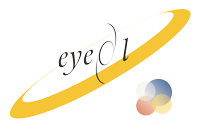Astigmatism is a type of refractive error in which the eye does not focus light evenly on the retina. This results in distorted or blurred vision at all distances. Other symptoms can include eyestrain, headaches, and trouble driving at night. If it occurs early in life it can result in amblyopia.
The cause of astigmatism is unclear. It is believed to be partly related to genetic factors. The underlying mechanism involves an irregular curvature of the cornea or abnormalities in the lens of the eye. Diagnosis is by an eye exam.
Three options exist for the treatment: glasses, contact lenses, and surgery. Glasses are the simplest.[1] Contact lenses can provide a wider field of vision. Refractive surgery permanently changes the shape of the eye.
In Europe and Asia astigmatism affects between 30 and 60% of adults. People of all ages can be affected. Astigmatism was first reported by Thomas Young in 1801
Signs and symptoms:
Although astigmatism may be asymptomatic, higher degrees of astigmatism may cause symptoms such as blurry vision, double vision, squinting, eye strain, fatigue, or headaches. Some research has pointed to the link between astigmatism and higher prevalence of migraine headaches
Diagnosis:
A number of tests are used during eye examinations to determine the presence of astigmatism and to quantify its amount and axis. A Snellen chart or other eye charts may initially reveal reduced visual acuity. A keratometer may be used to measure the curvature of the steepest and flattest meridians in the cornea's front surface. Corneal topography may also be used to obtain a more accurate representation of the cornea's shape. An autorefractor or retinoscopy may provide an objective estimate of the eye's refractive error and the use of Jackson cross cylinders in a phoropter or trial frame may be used to subjectively refine those measurements. An alternative technique with the phoropter requires the use of a "clock dial" or "sunburst" chart to determine the astigmatic axis and power. A keratometer may also be used to estimate astigmatism by finding the difference in power between the two primary meridians of the cornea. Javal's rule can then be used to compute the estimate of astigmatism.
A method of astigmatism analysis by Alpins may be used to determine both how much surgical change of the cornea is needed and after surgery to determine how close treatment was to the goal.
Another rarely used refraction technique involves the use of a stenopaeic slit (a thin slit aperture) where the refraction is determined in specific meridians – this technique is particularly useful in cases where the patient has a high degree of astigmatism or in refracting patients with irregular astigmatism.
There are three primary types of astigmatism: myopic astigmatism, hyperopic astigmatism, and mixed astigmatism.

Treatment:
Astigmatism may be corrected with eyeglasses, contact lenses, or refractive surgery. Various considerations involving eye health, refractive status, and lifestyle determine whether one option may be better than another. In those with keratoconus, certain contact lenses often enable patients to achieve better visual acuity than eyeglasses. Once only available in a rigid, gas-permeable form, toric lenses are now available also as soft lenses.
Laser eye surgery (LASIK and PRK) is successful in treating astigmatism
